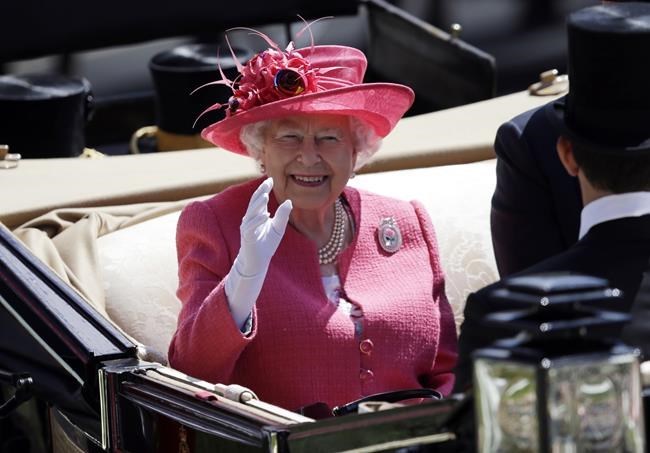It was a classic and comforting sight on the British sporting calendar, Queen Elizabeth II smiling and waving from inside a horse-drawn carriage leading other members of the royal family in a procession along the racetrack at Royal Ascot.
The monarch would then spend the day watching the races from the Royal Enclosure, cheering on her horses — win or lose.
And she won plenty.
Horse racing was the big sporting fascination of the queen, who died on Thursday at the age of 96. She first rode a horse at the age of 3 — and was immediately besotted with them — and would inherit the breeding and racing stock of her father, King George VI, when she acceded to the throne in 1952.
She became one of the biggest faces of British and global horse racing.
The queen was also present at some of the most famous occasions in British sporting history.
She handed the Jules Rimet Trophy to England captain Bobby Moore when the national soccer team won the men’s World Cup by beating West Germany at Wembley Stadium in 1966.
She was in the Royal Box on Centre Court at Wimbledon when British player Virginia Wade won the women’s singles title in 1977, the championship’s centenary year.
And, more recently, she had a cameo in the opening ceremony of the London Olympics in 2012, filming a comedy sketch with James Bond actor Daniel Craig where the queen — well, a stunt double, anyway — jumped out of a helicopter and parachuted into the Olympic Stadium. She allowed Danny Boyle, who directed the ceremony, and his crew access to her quarters at Buckingham Palace for a one-day shoot a few months earlier.
Horse racing was her big love, though, and she was often seen visiting The Royal Stud at her estate at Sandringham, patting her horses tenderly.
The Queen's Plate, North America's longest continuously run stakes race, was first staged in Toronto, with royal endorsement, on June 27, 1860.
Queen Elizabeth attended four of the races at Woodbine Racetrack, the last being in 2010 during her final visit to Canada.
“We are so very grateful for the support of Her Majesty over the years and will honour her legacy by continuing to share the love of horses with people around the world,” Jim Lawson, CEO of Woodbine Entertainment, said in a statement.
Following this summer's 163rd running of the Queen’s Plate, Woodbine sent its traditional telegram to the queen to celebrate the winning horse, Moira. In turn, Buckingham Palace delivered its traditional 50 guineas, symbolic of the race's original purse, to the owner of the winning horse.
“My philosophy about racing is simple,” she said in a BBC documentary, The Queen’s Racehorses: A Personal View. “I enjoy breeding a horse that is faster than other people’s.
“And to me, that is a gamble from a long way back. I enjoy going racing but I suppose, basically, I love horses, and the thoroughbred epitomizes a really good horse to me.”
The queen had approaching 2,000 winners as a racehorse owner, with her jockeys always wearing purple, gold and scarlet — the colors of the storied royal racing silks also used by father and great grandfather, King Edward VII.
Her first winner was a horse called Monaveen, at Fontwell in 1949, and she went on to win all of the so-called “classics” in British horse racing except for The Derby, another event she attended for most of her life.
One of the queen’s most famous wins came at Royal Ascot in 2013 when Estimate became the first horse owned by a reigning monarch to win the prestigious Gold Cup. It was her first win in an elite race since 1989 and she was seen clapping enthusiastically as jockey Ryan Moore powered through to finish first by a neck in front of 61,000 racegoers.
Michael Stoute, who trained the queen’s horses, said winning races gave her a “special thrill.”
“She really loves this game,” he said after Estimate’s victory, “and it’s a great recreation for her."
She was the champion owner in British flat racing on two occasions, in 1954 and ’57.
The queen even attended America’s greatest horse race, the Kentucky Derby, in 2007 while visiting the heart of U.S. racing in Kentucky bluegrass country.
Following the announcement of the queen’s death, the British Horseracing Authority said racing in Britain for the rest of Thursday and Friday would be suspended “as we begin to grieve Her Majesty’s passing and remember her extraordinary life and contribution to our sport and our nation.”
___
More AP sports: https://apnews.com/hub/apf-sports and https://twitter.com/AP_Sports
Steve Douglas, The Associated Press


